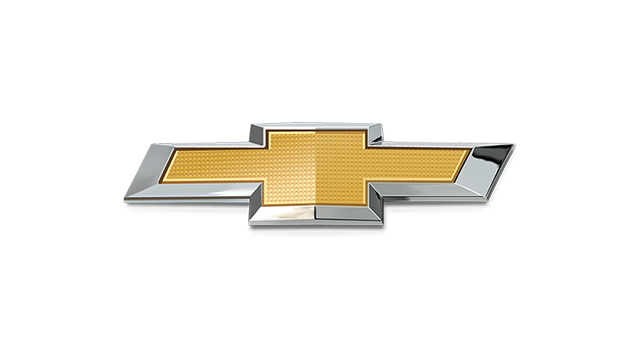Let's kick off this last installment with some vintage Skylines. These cars are indeed legendary, with a massive following worldwide. Now I don’t claim to be an expert on this model, but these are the ancestors of some of the most sophisticated Japanese sports cars the world has ever seen.

This blue 1962 Prince Skyline Sports Coupe that is resting on jack stands for maintenance is extremely rare. Only 60 units were manufactured of this body type. This model was designed by Italian coach-builder Giovanni Michelotti, and if you look closely, you can see how some of his design cues still carry on in the current GT-R.

Here’s a closer look of a gold one parked at the main entrance of the garage. It is immaculate. Though it only packs an OHV four-cylinder motor, it was a step toward more power and performance.

This is one of those cars that I can’t stop looking at. Even I find this angle fascinating. Have I already said that I’m a big fan of fender mirrors?

Look at the subtle ornamentation of its grille. They really don’t make cars like they used to. Now let us take a look at some newer and more powerful Skylines.

The 1969 2000GT-R Skyline is considered to be the Holy Grail in the entire history of the model range. Here are two in red and silver.

Its heart is a high-performance DOHC 24-valve engine that is good for 160hp. This car is famous for its top speed of 200kph.

Japanese-car enthusiasts will kill for a chance to own either of these ‘Hakosuka’ Skylines.

Here’s a shot of the interior...

...and its stock hubcaps. Now we can move on to some Skyline track monsters.

The blue and silver 1969 GT-R race car comes from a family of Skylines that dominated the Japanese racing circuit, with 50 victories over the span of two years. It is no wonder that this model will forever be adored by Japanese racing fans.

This one looks so different with all of the trim pieces removed. I am sure that a set of mouldings for these cars will cost a small fortune.

This Kenmerei or ‘Ken & Mary’ Skyline GT-R was never raced, as it was a demo car for the 1972 Tokyo Motor Show.

Fender flares and wide-lipped RS Watanabe magnesium wheels. This combination is period correct, and looks perfect on this car. Now let’s move on to a different breed of racing machine.

Behold the ‘super-silhouette’ racers of the ’80s. These cars (except for the one in the middle) are the inspiration for that crazy ‘kyusha’ style that is famous in Japan. There is a whole subculture that worships this style.

Check out the tail and the lip of this 1983 Central 20 racing Team Bluebird. Driven by H. Yanagida, this car won two titles.

And for an idea of how wild its bodywork is, check it out from this angle. The super-silhouette class is known as such because of its unique regulations. Anything could be done to the bodywork, as long as the car still had the basic ‘silhouette’ of the original model. Engine-wise, as long the racer used the same block as the production car, engineers could do anything. Turbochargers were the norm, and some motors generated close to 600hp—this was more than what F1 cars were creating at the time. This was exciting, and racing was intense.

This is the Impul-Hoshino Silvia driven by K. Hoshino. It is like an F1 machine underneath, with a body on top. Hoshino would later move on to become a popular aftermarket performance parts supplier.

Hoshino owns a company that makes alloy wheels to this day. In old-school circles his design is quite popular. The alloys mounted on this car are the Hoshino style.

Good luck finding a set this wide in Banawe, though. Back then, it wasn’t how tall your mags were, it was how wide. These race cars probably had something to do with the trend. Next up are some smaller competition cars that pack some serious racing engines.

This Sunny competition car won the TS Race of the 1973 Japan Grand Prix. Its 1600cc LZ engine packs 200 horses that peak at 9,400rpm, all thanks to the addition of a bolt-on twin-cam head. Nissan developed this car to topple Toyota’s twin-cam 1600 Celica GT and Corolla Sprinter/Levin Trueno—models that dominated the series at the time.

This is the 1972 Sunny that was used as a test mule by the racing arm of the Nissan factory. Do you like the apron spoiler?

This 1976 Cherry looks the part of a racer, but it was only used for demonstration purposes. At this point Nissan took a hiatus from racing. Now let’s move on to some roadsters.

This 1959 Datsun Sports is the predecessor of the Fairlady roadster. I love how you can see its resemblance with the newer models.

This LHD unit was marketed in the US, and it was quite successful there.

Here’s nice example of a 1968 Fairlady 2000. Under its hood is a 1982cc motor that is good for 124hp.

It looks gorgeous from the rear. You can tell that there is a bit of British influence, particularly from the MG brand. However, Nissan added its own design flavor, and the result is pure eye candy.

The name ‘Fairlady’ was coined by Nissan’s then-president Kastsuji Kawamata. While he was in the US, he was moved by a very popular musical called My Fair Lady. He hoped Nissan’s little sports car would be successful for many years, just like the Broadway hit. Thus, the Fairlady badge was born. The name was first used in 1961.

I think that whatever the car was called, it would have still sold very well. In fact, the Fairlady is an integral part of Japan’s sports car history.

Here’s a red 1968 USDM Fairlady.

And a shot of its worn-out interior.

I didn’t know it at the time, but there is something very special about that little roadster on the left. I couldn’t stop snapping pictures of it, even if I didn’t know anything about it. I am sure that my pals Steven Flor and Peter Smith will appreciate this fine bit of machinery.

After doing some research, it turns out that this particular Fairlady was the winner of its class during the very first Japanese Grand Prix, held in May, 1963. The Suzuka Circuit had just been completed and 200,000 people were in attendance for its inaugural race.

This 1500cc Fairlady, driven by a G. Tahara, was entered in the sports car race, class B-II (with displacements ranging from 1300- to 2500cc). After qualifying third, it managed to win, beating Triumphs, MGBs, and Fiats. This was a momentous occasion, as Japanese vehicles were finally seen as equals. No wonder there was good energy emanating from this priceless Fairlady.

Look at how the wheels tuck neatly into the rear arches. I don’t know about what you guys think, but steel rims really work well with this car.

No wonder this baby is displayed prominently. And let’s not forget that it is in perfect running condition.

Here’s a shot of the dashboard. I can only imagine what it is like to drive the first winner of the First Japanese Grand Prix. Look! The keys are in the ignition.

Well, this wraps the virtual tour of the Zama Garage. Due to the sheer number of cars, it would have been impossible to document them all for you here. But who knows? I might be able to visit the place again and take photos of the cars that I missed. There is more old-school goodness to come, mostly from our shores this time. Oh, and by the way: Should any of you be interested, there will be a very big old-schooler meet in Banawe, Quezon City, March 10, 6pm onwards. It should be interesting. See you there!












